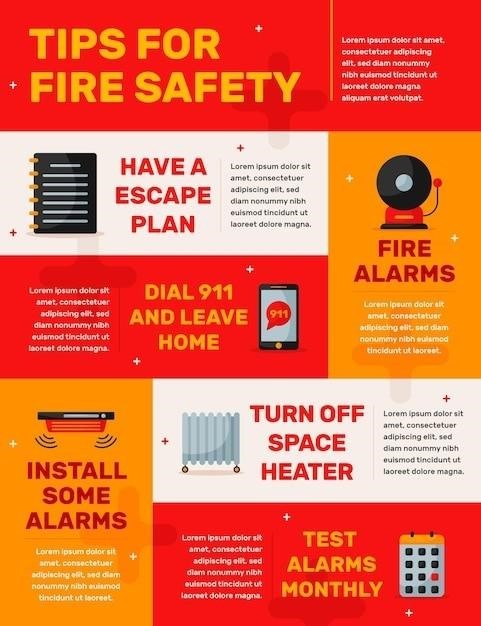This comprehensive guide will walk you through the installation process of the Honeywell TH3210D1004 non-programmable digital thermostat, ensuring a smooth and efficient setup. You will find detailed instructions on everything from pre-installation checks to wiring terminal designations, fan operation settings, and thermostat mounting. This guide provides step-by-step instructions and clear diagrams to aid you in a successful installation, ensuring your thermostat functions correctly and provides optimal comfort for your home.
Overview
The Honeywell TH3210D1004 is a non-programmable digital thermostat designed for use with 24 Vac conventional and heat pump systems or 750 mV heating systems. This thermostat offers a simple and user-friendly interface, making it ideal for those who prefer a straightforward approach to temperature control. It features a backlit digital display, ensuring easy visibility of both current and set temperatures in various lighting conditions. The TH3210D1004 provides precise comfort control, maintaining a consistent temperature within a 1-degree Fahrenheit range. It also comes with a five-year warranty (with normal usage), ensuring peace of mind for your investment. This thermostat is designed for professional installation, and its compact dimensions (3-13/16 in. High X 5-3/8 in. Wide X 1-1/4 in. Deep) allow for a seamless integration into any home decor. The TH3210D1004/U Honeywell Home thermostat from Resideo is a reliable and efficient option for creating a comfortable and energy-efficient living environment.
Pre-Installation Checklist
Before embarking on the installation of your Honeywell TH3210D1004 thermostat, it is crucial to ensure you have all the necessary components and tools readily available. This will streamline the process and prevent any delays or potential complications. Start by carefully examining the contents of your package. It should include the PRO TH3210D digital thermostat, a UWP mounting system, a Honeywell Home Standard Installation Adapter (J-box adapter), screws and anchors, installation instructions, and a user guide. Additionally, gather the following essential tools⁚ a Phillips head screwdriver, a level, a pencil, a drill, and a wire stripper. If your existing thermostat is wired with a different type of wire, you may need an appropriate wire connector. It is highly recommended to consult the installation manual for specific wiring requirements and to ensure compatibility with your existing system. By completing this pre-installation checklist, you can ensure a smooth and successful installation process for your new Honeywell thermostat.
Wallplate Installation
The wallplate serves as the foundation for your Honeywell TH3210D1004 thermostat, providing a secure and aesthetically pleasing mount. To begin, carefully remove the wallplate from the thermostat by gently pulling it from the bottom. Once detached, you can proceed with mounting the wallplate to the wall. Start by pulling the wires through the designated wire hole. Ensure the wires are routed smoothly and securely. Next, position the wallplate on the wall, ensuring it is level. Use a pencil to mark the hole positions for mounting. Drill holes at the marked positions using a drill bit that matches the size of the supplied wall anchors. Tap the wall anchors firmly into the drilled holes. Now, carefully place the wallplate over the anchors, aligning it with the marked positions. Insert the mounting screws through the wallplate and into the anchors, tightening them securely. This ensures a stable and secure mount for your thermostat, allowing it to function reliably for years to come.
Wiring Terminal Designations
Proper wiring is crucial for the correct operation of the Honeywell TH3210D1004 thermostat. Understanding the terminal designations is essential for connecting the wires accurately. Each terminal on the thermostat corresponds to a specific function in your HVAC system. The terminals are typically labeled with letters or symbols. Common terminals include⁚ “R” for the power supply, “W” for heating, “C” for the common wire, “Y” for cooling, “G” for fan control, and “O” for an optional outdoor sensor. Before connecting any wires, consult the installation manual for your specific system and thermostat model to confirm the correct terminal assignments. Incorrect wiring can cause malfunctions and damage to your HVAC system. If you are unsure about the wiring, seek assistance from a qualified HVAC technician. They can ensure a safe and accurate connection, ensuring your thermostat operates seamlessly with your HVAC system.
Fan Operation Settings
The Honeywell TH3210D1004 thermostat offers flexibility in controlling the fan operation. This feature allows you to optimize air circulation and comfort levels in your home. The fan operation settings on the thermostat typically include options for “Auto,” “On,” and potentially other modes depending on your specific system. “Auto” mode automatically cycles the fan when the HVAC system is running, while “On” mode keeps the fan running continuously, even when the system is not heating or cooling. Choosing the appropriate fan setting depends on your individual preferences and the specific requirements of your HVAC system. If you are unsure about the best fan setting for your home, consult the installation manual or contact a qualified HVAC technician for guidance. They can help you select the optimal fan settings to enhance comfort and efficiency in your home.
Thermostat Mounting
The Honeywell TH3210D1004 thermostat is designed for easy mounting, ensuring a secure and aesthetically pleasing installation. Before mounting the thermostat, ensure that the wall surface is clean and free of obstructions. It’s recommended to choose a location that is easily accessible and away from direct sunlight or heat sources. The thermostat is typically mounted on a wallplate, which is included in the package. To mount the thermostat, follow the instructions provided in the installation manual. This may involve drilling holes in the wall, inserting anchors, and securing the wallplate using screws. The thermostat itself is then attached to the wallplate using a secure method, often involving a snap-in mechanism. Once mounted, ensure that the thermostat is level and aligned correctly for optimal performance.
Installer Setup

The Honeywell TH3210D1004 thermostat requires a few initial setup steps to ensure it functions correctly with your HVAC system. This process is typically performed by a qualified HVAC technician or installer. The installer setup involves configuring the thermostat to match the specific features and settings of your heating and cooling system. This may include selecting the correct system type, such as a conventional system or a heat pump. The installer will also configure the thermostat’s temperature range and other settings to ensure optimal comfort and efficiency. The setup process may involve accessing the thermostat’s installer menu, which can be accessed using specific key combinations or by navigating through the thermostat’s interface. The installer will then use the menu to input system parameters, calibrate settings, and finalize the installation. This setup process is crucial to ensure that the thermostat operates correctly and integrates seamlessly with your HVAC system.
Setup Function Settings and Options
Once the initial installer setup is complete, you can fine-tune the Honeywell TH3210D1004 thermostat to your specific preferences. This involves adjusting various function settings and options to optimize comfort and energy efficiency. These settings might include adjusting the temperature range, setting fan operation modes, and configuring the thermostat’s response to temperature changes. You can choose between different fan settings, such as “Auto,” “On,” or “Circulate,” depending on your desired air circulation levels. The thermostat also allows you to set a temperature differential, which determines the temperature difference between the set temperature and the actual temperature before the HVAC system engages. By adjusting these settings, you can ensure that the thermostat operates efficiently and provides the ideal temperature for your home throughout the year. It’s important to review the user manual for detailed instructions on accessing and adjusting these settings.
Power Options
The Honeywell TH3210D1004 thermostat offers flexibility in terms of power options, allowing you to choose the most suitable method for your installation. You can power the thermostat directly from your home’s electrical system using a 24 VAC connection, which provides a constant power supply. This eliminates the need for batteries and ensures uninterrupted operation of the thermostat; Alternatively, you can opt for battery-powered operation, which provides a backup power source in case of a power outage. This ensures that your thermostat remains functional even during power interruptions, allowing you to maintain a comfortable temperature in your home. The choice between AC power and battery backup depends on your individual needs and preferences. If you prioritize continuous operation and reliable temperature control, AC power is recommended. However, if you prefer the added security of battery backup during power outages, battery-powered operation is a suitable option.
Troubleshooting
While the Honeywell TH3210D1004 is designed for ease of installation and reliable operation, you may encounter occasional issues. If your thermostat isn’t working as expected, it’s important to troubleshoot the problem systematically. Start by verifying that the thermostat is receiving power. Check the wiring connections and ensure that the power source is active. If the power supply is confirmed, inspect the display for any error messages or unusual behavior. If you notice any errors, consult the user manual for specific troubleshooting steps. Pay attention to the wiring connections, as incorrect wiring can cause malfunctions. Ensure that the wires are properly connected to the correct terminals and that there are no loose or damaged connections. If you’ve checked the wiring and power supply and the issue persists, you may need to reset the thermostat. This can often resolve minor glitches or software errors. Consult the user manual for instructions on how to reset your thermostat. If you’re unable to resolve the issue after performing these troubleshooting steps, it’s recommended to contact a qualified HVAC technician for professional assistance.
Safety Precautions
Prior to commencing the installation of your Honeywell TH3210D1004 thermostat, it’s crucial to prioritize safety and adhere to the following precautions. Before working with electrical components, always disconnect the power supply to the system. This is essential to prevent electrical shocks and ensure a safe working environment. Ensure that the area around the thermostat is clear of any obstructions or hazards that could cause injury. Exercise caution when using tools, and always wear appropriate safety gear such as gloves and eye protection. When handling the thermostat, avoid excessive force or pressure, as this could damage the device. Familiarize yourself with the wiring connections and ensure that they are correctly matched to the terminals on the thermostat. If you’re unsure about any aspect of the installation process, it’s best to consult a qualified HVAC technician for professional assistance. By following these safety precautions, you can minimize risks and ensure a successful and safe installation of your Honeywell TH3210D1004 thermostat.
Warranty Information
Your Honeywell TH3210D1004 thermostat comes with a comprehensive warranty that provides peace of mind and protection against defects. The warranty covers manufacturing defects in materials and workmanship for a specified period. To ensure your warranty remains valid, it’s crucial to follow the installation instructions provided in the manual. Improper installation or modifications to the thermostat can void the warranty. In the event of any issues or malfunctions within the warranty period, contact Honeywell’s customer support team. They will guide you through the process of resolving the issue and, if necessary, arrange for repairs or replacement of the thermostat. Keep your proof of purchase handy, as it’s required when making warranty claims. For detailed information about the warranty terms, coverage, and procedures for making claims, refer to the warranty documentation included with your thermostat or visit the Honeywell website for online resources.

